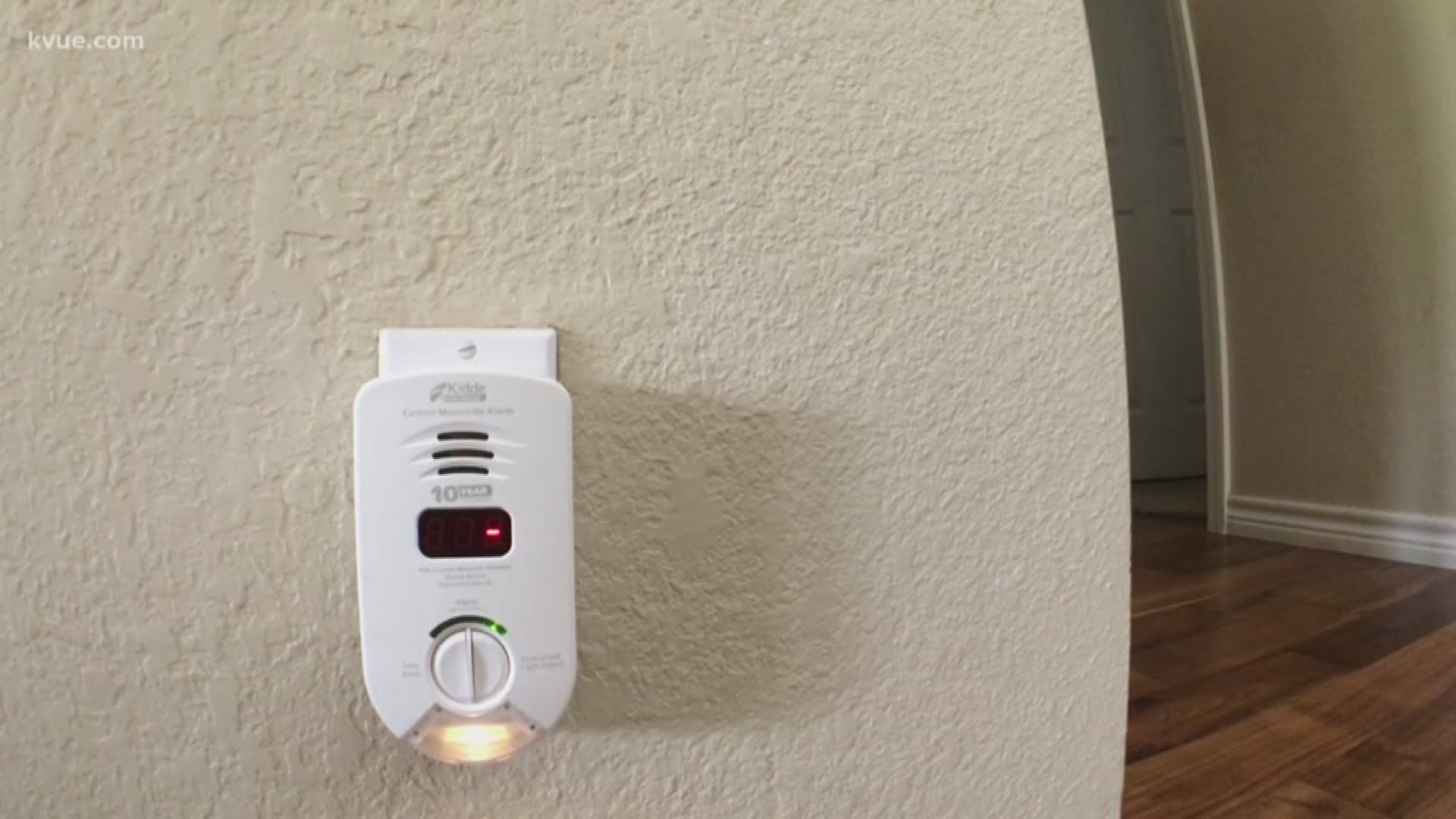AUSTIN — A new city ordinance that took effect April 1 requires homes and businesses with gas or fuel-burning appliances to have carbon monoxide detectors.
"[Carbon monoxide] is the silent killer," Hilda Martinez, an employee with Austin Code Deparment's Code Educational Outreach Division, told KVUE.
She knows all too well about the dangers of carbon monoxide poisoning. The toxic gas nearly killed her mother, sister, niece, and nephew 20 years ago.
"There was a malfunction in the gas appliance, the heater," Martinez said, referring to the San Antonio home her family members were staying in at the time of the accident. "The one thing that saved them was that the window was open, maybe about an inch or so. Fortunately, we lucked out. Everybody made it out okay."
Martinez is now helping to get the word out about how you can protect yourself and your family from this silent killer.
Carbon monoxide detectors measure CO levels and sound an alarm before things get too dangerous.
"It is to save your life and those that are with you," Martinez said. "You just never know. You just never know."
Martinez told KVUE code enforcers won't necessarily be going around the city making sure they're installed. Instead, they'll knock on your door if they have received a prior complaint. You could receive a ticket if you're found to be in violation of the ordinance.
Carbon monoxide detectors can cost as little as $10, although KVUE found them selling for $40 and up. The Austin Fire Department gets grant money to give out free smoke detectors, but right now they are not handing out carbon monoxide detectors. The department tells KVUE it hopes to see if it can offer a program similar to that for carbon monoxide detectors in the future.
If you buy one of these detectors it is best to place it about five feet from the ground and near bedrooms, either inside the bedroom or in a hallway.
Two different carbon monoxide detection devices
There are two different types of carbon monoxide detection devices -- alarms and monitors. Alarms detect high or dangerous levels of carbon monoxide and monitors detect lower levels of carbon monoxide to give a warning sooner.
Carbon monoxide alarms or detectors
These are the most common type of carbon monoxide devices. They work like your smoke or fire alarms, simply alerting you when it deems that there is a dangerous amount of carbon monoxide in your home.
However, long exposure to low levels of carbon monoxide can be as dangerous as short amount of exposure to high levels. And most alarms and detectors only tell you about the high levels. That’s where the carbon monoxide monitor enters.
Carbon monoxide monitor
A carbon monoxide monitor is different because it actively monitors the amount of carbon monoxide in your air and gives you a digital readout. This lets you know when there are higher than usual amounts of carbon monoxide in your home, even if they aren’t at what other alarms deem a “dangerous” level.
Carbon monoxide is measured in a ratio called ppm (parts per million). Just as 5 percent means 5 out of a 100, 5 ppm means 5 out of 1 million. So if your home has 10 ppm of carbon monoxide, there is 10 carbon monoxide molecules for every million molecules in the air.
How much carbon monoxide is too much?
Even in homes without gas appliances, there could be carbon monoxide. So how do you know how much is too much? It depends on your age, size and health. Here are some common thresholds of carbon monoxide.
- 0.5-5 ppm: According to the Environmental Protection Agency (EPA), this is the usual range for homes without gas stoves or other gas appliances.
- Under 70 ppm: Most people have no ill effects when exposed to ranges below 70 ppm for short periods of time. Prolonged exposure (6-8 hours) can cause dizziness and headaches. Also, those with heart problems may experience chest pain, according to the Consumer Product Safety Commission (CPSC).
- 100 ppm: Slight headache when exposed for 2 hours or longer.
- 150-200 ppm: Prolonged exposure at these levels often leads to disorientation and unconsciousness and can also lead to death.
Click here to learn more about the Austin ordinance.

